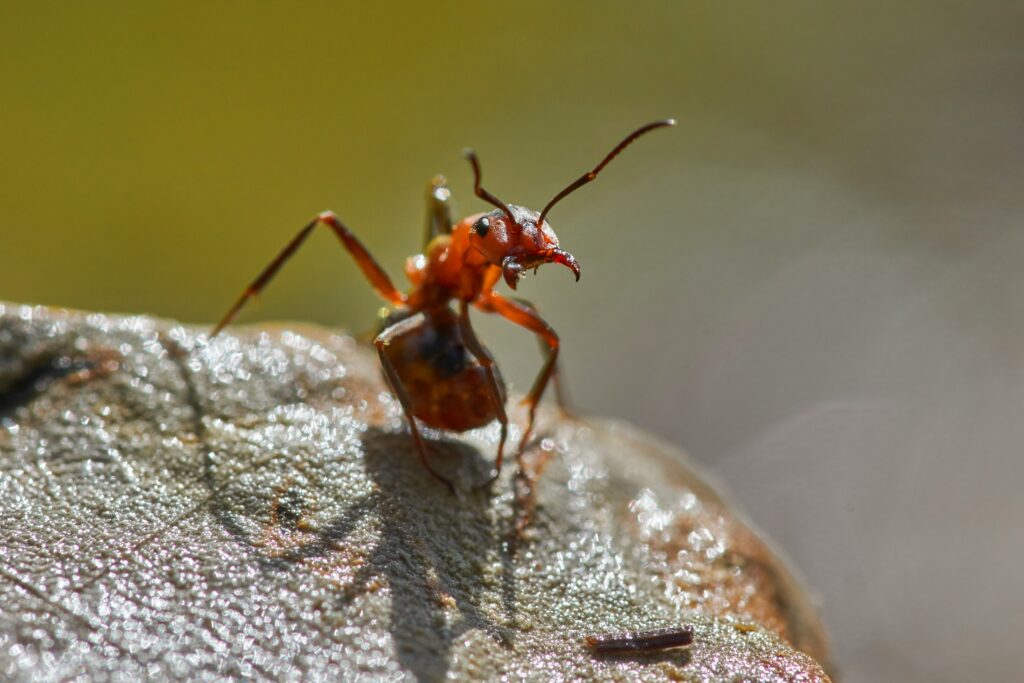Deep in the heart of Texas, beneath the scorching sun and amid the rugged landscape, exists one of nature’s most sophisticated agricultural operations. It’s not run by humans with tractors and combines, but by tiny insects that have perfected farming techniques millions of years before we even existed. These remarkable creatures have built underground cities that rival our modern metropolises, complete with waste management systems, air conditioning, and specialized job roles that would make any corporate structure jealous.
The Underground Empire Builders
Texas leafcutter ants construct some of the most impressive architectural marvels in the animal kingdom, creating vast underground networks that can extend 20 feet deep and span across an area the size of a football field. These subterranean cities house millions of inhabitants, each with a specific role in maintaining their fungal farming operation. The main chambers can be as large as beach balls, connected by tunnels that stretch for hundreds of feet, creating a labyrinth that puts ancient Roman catacombs to shame. Think of it like a massive underground shopping mall, but instead of stores, there are fungus gardens, nurseries, and waste disposal areas. The engineering precision required to maintain proper ventilation, temperature control, and humidity levels throughout these sprawling complexes demonstrates a level of sophistication that challenges our understanding of insect intelligence.
Nature’s Most Efficient Harvesting Crew
When you witness a leafcutter ant trail in action, you’re watching one of nature’s most organized supply chains unfold before your eyes. These tireless workers can strip entire trees of their leaves in just a few days, carrying leaf fragments that weigh up to 20 times their own body weight. Imagine if humans could carry around small cars on their backs while running marathons – that’s essentially what these ants accomplish daily. The harvesting process involves scout ants that locate the best vegetation, followed by waves of workers that cut, carry, and transport the precious cargo back to their underground farms. Their leaf-cutting technique is so precise that they can slice through tough plant material with surgical accuracy, creating perfectly sized pieces for optimal fungus cultivation.
The Fungus Farming Revolution
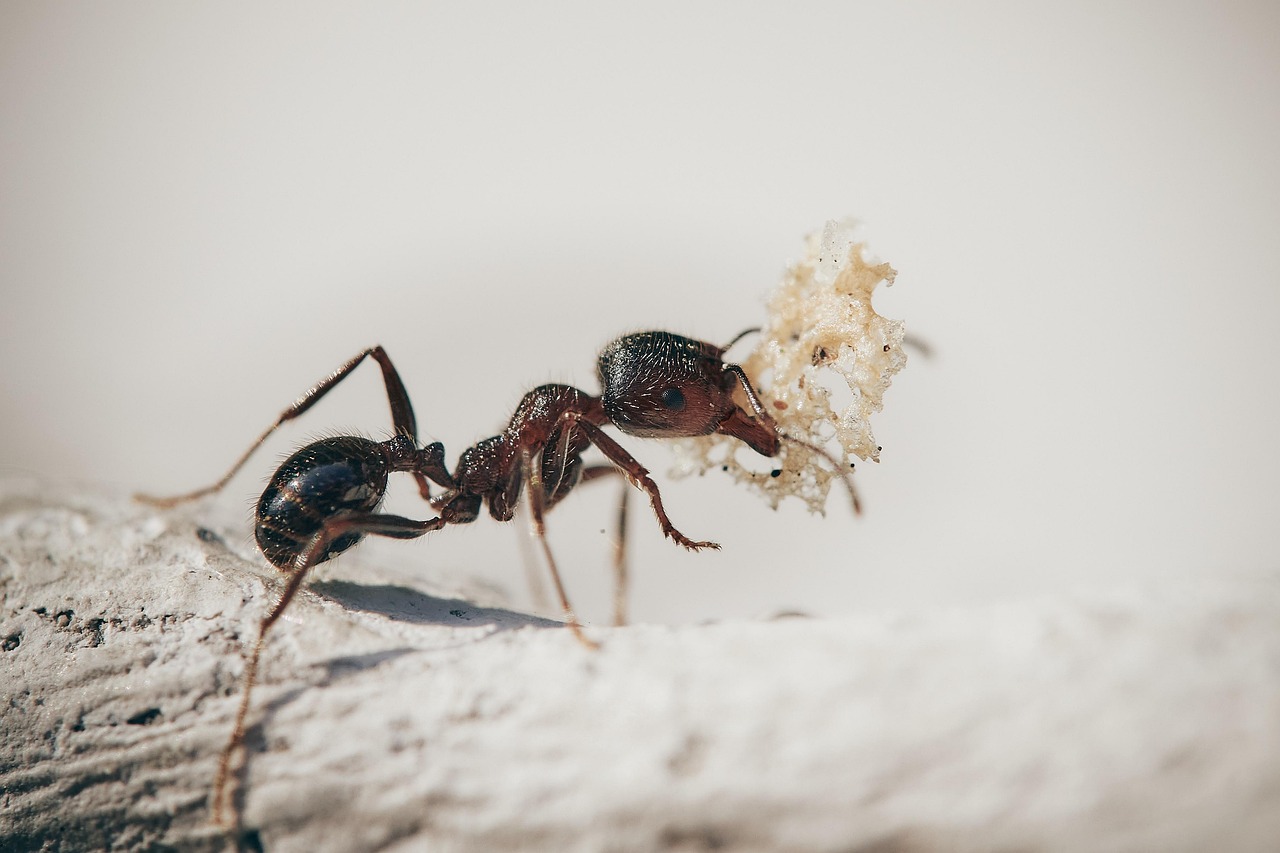
Here’s where things get truly mind-blowing: leafcutter ants don’t actually eat the leaves they harvest. Instead, they use them as compost to grow a special type of fungus that serves as their primary food source, making them the world’s first farmers by about 50 million years. This fungus, found nowhere else in nature, has co-evolved with the ants to create a perfect symbiotic relationship. The ants carefully tend their fungus gardens like master gardeners, removing competing molds, adjusting moisture levels, and adding fresh leaf material to feed their crops. It’s like having a greenhouse operation where the plants are completely dependent on their caretakers, and the caretakers are completely dependent on their plants. This agricultural system is so efficient that it supports colonies containing up to 8 million individuals.
The Caste System That Actually Works
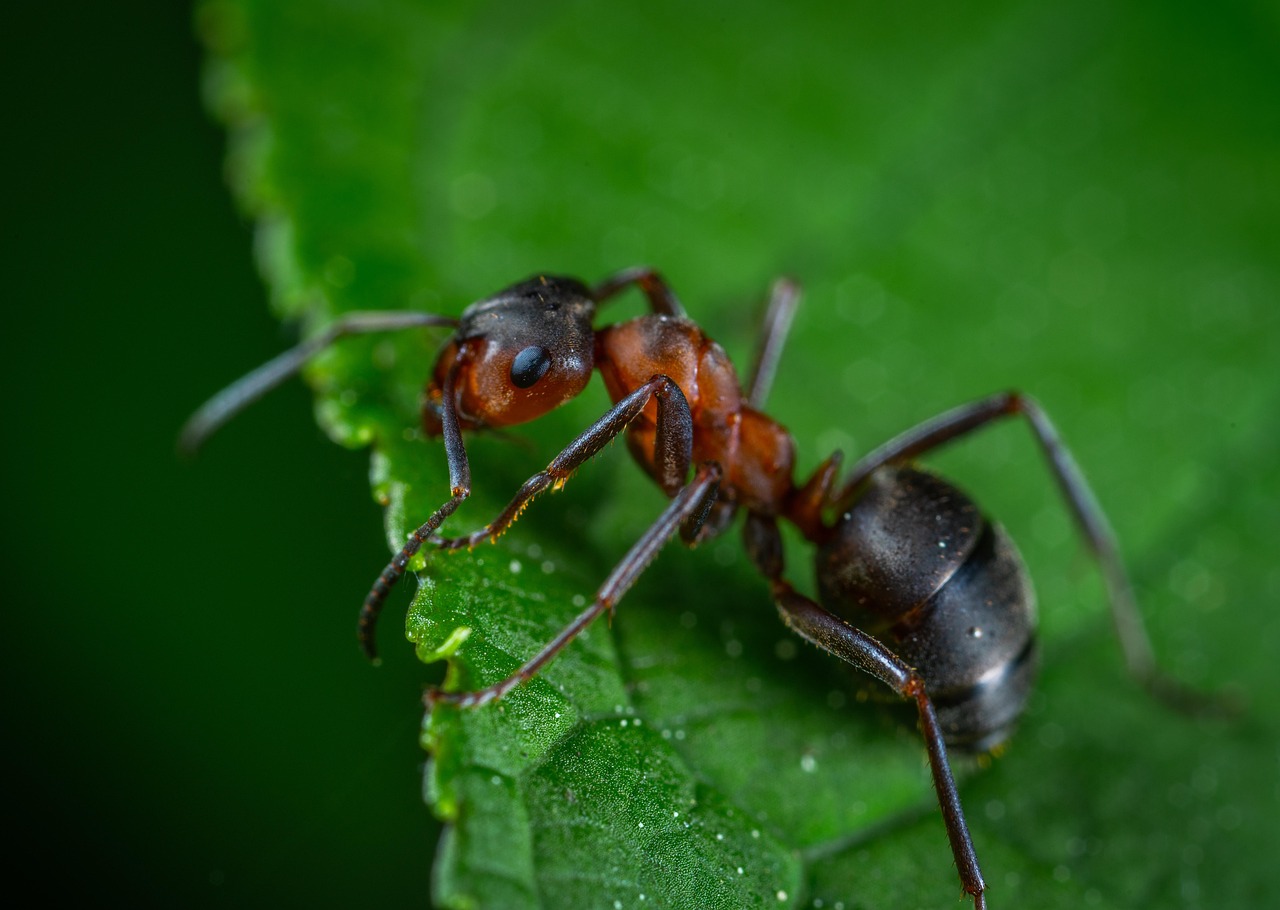
Leafcutter ant society operates on a rigid caste system where every individual knows their role from birth, creating a level of social organization that would make any military general envious. The largest ants, called majors or soldiers, serve as living bulldozers and security guards, using their massive jaws to defend the colony and clear pathways for smaller workers. Medium-sized workers handle the heavy lifting, cutting leaves and transporting them back to the nest with the determination of seasoned construction crews. The smallest ants, barely visible to the naked eye, ride on the backs of leaf-carrying workers like tiny hitchhikers, protecting them from parasitic flies that try to lay eggs in their heads during the vulnerable transport process. At the top of this hierarchy sits the queen, a massive egg-laying machine that can live for up to 20 years and produce millions of offspring.
Chemical Communication Mastery

These remarkable insects have developed a chemical communication system so sophisticated that it makes our internet look primitive by comparison. Leafcutter ants lay down scent trails using pheromones that convey detailed information about food quality, danger levels, and traffic conditions along their highways. When a worker discovers a particularly good source of leaves, she can chemically “shout” to her sisters, leading to recruitment trails that can mobilize thousands of workers within hours. The chemical messages are so precise that ants can distinguish between different types of information, much like how we might use different phone apps for different purposes. This chemical internet allows colonies to coordinate massive operations across vast distances without any central command structure, proving that effective communication doesn’t always require advanced technology.
The Antibiotic Pioneers
Long before humans discovered penicillin, leafcutter ants were already using antibiotics to protect their precious fungus gardens from harmful bacteria and competing fungi. These tiny pharmacists cultivate beneficial bacteria on their bodies that produce powerful antimicrobial compounds, essentially turning themselves into walking medicine cabinets. The bacteria form a whitish coating on the ants’ exoskeletons, creating a natural antibiotic factory that continuously produces compounds to keep their fungus crops healthy. This biological pest control system is so effective that scientists are studying it to develop new antibiotics for human medicine. It’s fascinating to think that these insects solved the problem of crop protection millions of years ago using methods we’re only beginning to understand and appreciate.
Environmental Engineers Extraordinaire
The ecological impact of leafcutter ants extends far beyond their impressive underground cities, as they function as landscape architects that dramatically reshape entire ecosystems. Their selective harvesting patterns influence which plants thrive and which struggle, essentially acting as natural gardeners that maintain forest diversity. When ants abandon old nest sites, they leave behind incredibly fertile soil enriched with decades of organic matter, creating patches of nutrient-rich earth that support explosive plant growth. These abandoned sites often become biodiversity hotspots where rare plants flourish, demonstrating how these insects inadvertently create conservation areas. Think of them as nature’s urban planners, constantly redesigning the landscape to create optimal conditions for both their own survival and the broader ecosystem’s health.
The Great Leaf Selection Process
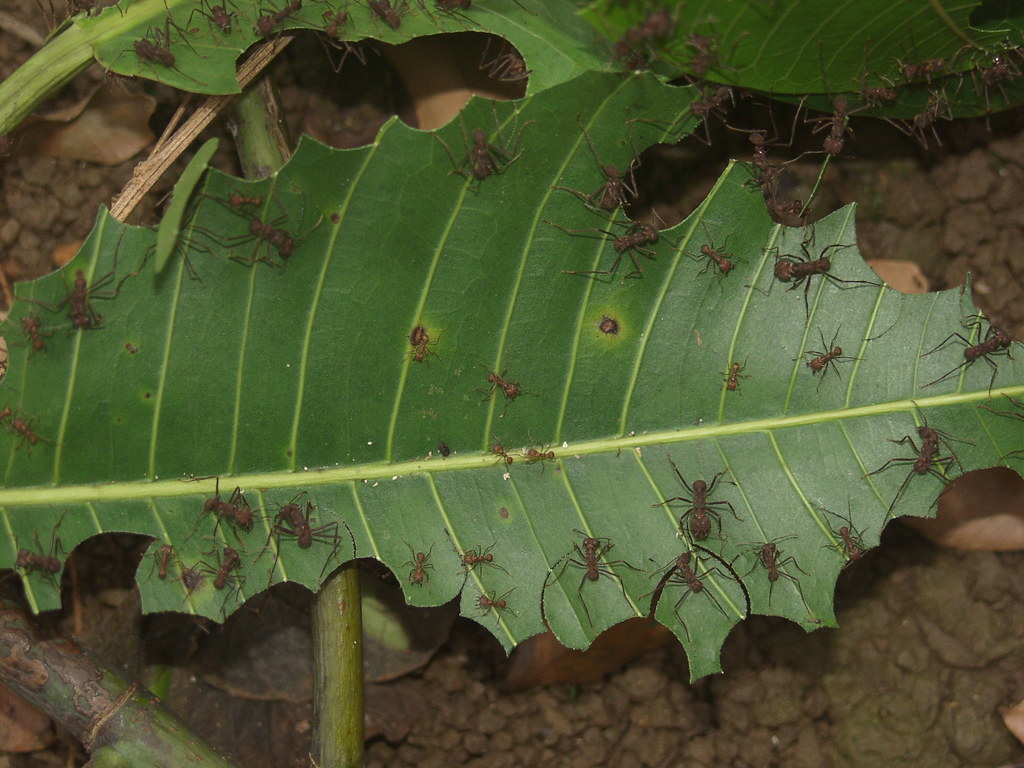
Leafcutter ants are incredibly picky about their plant choices, displaying a level of agricultural sophistication that would impress any master gardener or crop scientist. They actively avoid plants with high levels of toxic compounds, somehow knowing which species will poison their fungus gardens and which will provide optimal nutrition. This plant selection process involves complex chemical analysis that occurs right at the cutting site, with workers literally tasting potential crops before harvest. Some colonies have been observed switching their preferred plant species seasonally, adapting their agricultural practices based on availability and quality fluctuations. Their ability to maintain such high standards while feeding millions of colony members demonstrates a level of quality control that many human agricultural operations struggle to achieve.
Climate Control Specialists
The temperature and humidity control systems within leafcutter ant nests rival the most advanced HVAC systems in modern buildings, maintaining optimal growing conditions for their fungus crops year-round. These insects have engineered their tunnel systems to create natural air conditioning, using convection currents to circulate fresh air and remove excess moisture and carbon dioxide. During hot Texas summers, they can keep their fungus gardens at a cool, consistent temperature while the surface temperature soars above 100 degrees Fahrenheit. The ants accomplish this through strategic tunnel placement, chamber design, and behavioral modifications that include opening and closing ventilation shafts based on weather conditions. It’s like having a smart home system that automatically adjusts to environmental changes, except this technology was perfected by insects long before humans invented the thermostat.
The Waste Management Experts

Leafcutter ant colonies generate enormous amounts of organic waste, but they’ve developed waste management systems that put many human cities to shame in terms of efficiency and environmental impact. Specialized workers called waste management ants collect exhausted fungus substrate, dead colony members, and other organic debris, transporting it to designated dump chambers located far from the active fungus gardens. These waste areas are carefully maintained to prevent the growth of harmful bacteria and competing fungi that could threaten the colony’s health. The decomposing organic matter in these waste chambers actually helps regulate humidity levels throughout the nest while providing additional nutrients that can be recycled back into the fungus cultivation system. This circular economy approach demonstrates how these insects have achieved sustainability goals that human societies are still struggling to implement.
Reproductive Royalty and Succession Planning
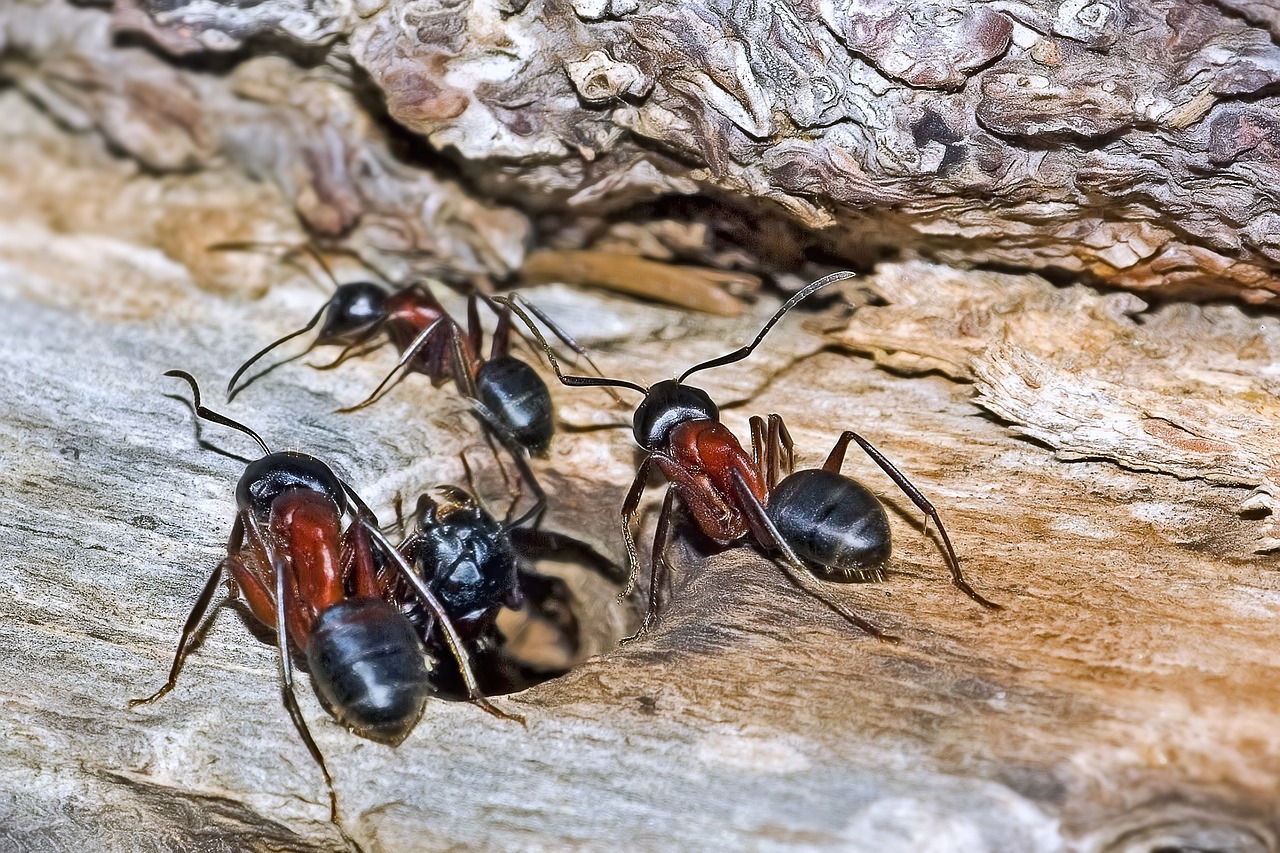
The reproductive cycle of leafcutter ants involves one of nature’s most spectacular aerial displays, as millions of winged reproductive ants emerge simultaneously during specific weather conditions for their nuptial flights. These massive swarms can darken the sky like living clouds, with virgin queens and males taking to the air in a coordinated mating ritual that ensures genetic diversity across the landscape. After mating, the newly fertilized queens face an incredible challenge: they must establish entirely new colonies while carrying samples of the essential fungus in specialized pouches in their mouths. This process is like starting a new civilization with nothing but the clothes on your back and a small bag of seeds. The success rate is incredibly low, with only a tiny fraction of queens successfully establishing new colonies, making each thriving leafcutter ant city a testament to extraordinary perseverance and luck.
Predators and Natural Enemies

Despite their impressive defenses and sophisticated social organization, leafcutter ants face constant threats from a variety of predators and parasites that have evolved specifically to exploit their agricultural lifestyle. Parasitic flies hover around foraging trails, attempting to inject eggs into worker ants’ heads, which is why the tiny minion ants ride shotgun on leaf-carrying workers to ward off these aerial attackers. Army ants pose perhaps the greatest threat, launching coordinated raids that can overwhelm even the most well-defended leafcutter colonies in brutal warfare that resembles medieval siege battles. Fungal pathogens also threaten their agricultural operations, requiring constant vigilance and the application of their biological antibiotic systems to prevent crop failures. Birds, lizards, and spiders pick off individual workers, while specialized parasites target different castes within the colony, creating a complex web of predator-prey relationships that keeps these insect farmers constantly on alert.
Economic Impact on Human Agriculture
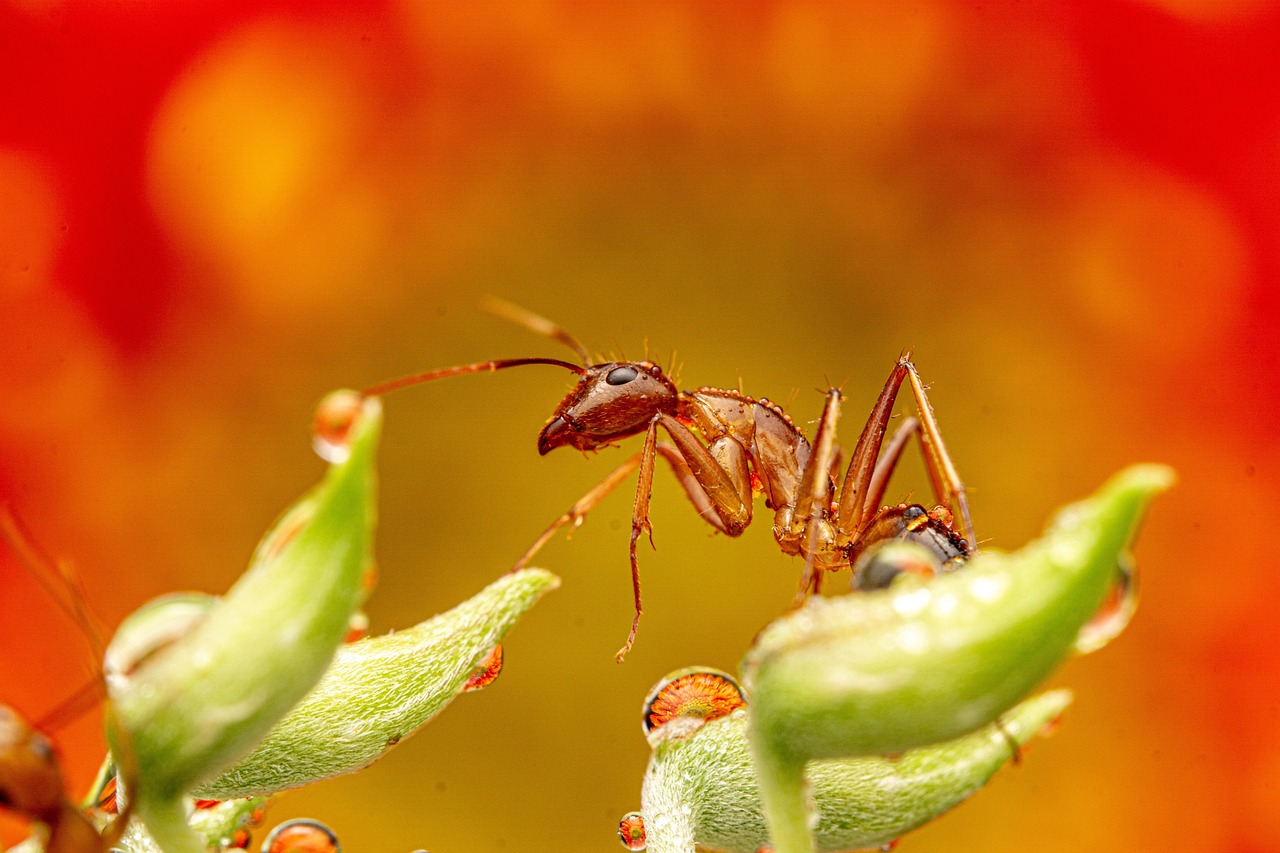
From a human perspective, leafcutter ants can be both fascinating subjects of study and significant agricultural pests, capable of causing millions of dollars in crop damage across their range. A single large colony can consume as much vegetation as a cow, stripping citrus groves, rose gardens, and crop fields with remarkable efficiency. Their selective harvesting can devastate specific plant species while leaving others untouched, creating unpredictable patterns of agricultural damage that challenge farmers and landscapers. However, their role as ecosystem engineers also provides benefits, as their soil aeration and nutrient cycling activities can improve land fertility in natural areas. The challenge lies in understanding and managing their impact while appreciating their ecological importance, much like learning to coexist with any other force of nature.
Scientific Research and Biomimicry

Scientists around the world are studying leafcutter ants to unlock secrets that could revolutionize human technology, from developing new antibiotics to creating more efficient transportation systems. Their decentralized decision-making processes inspire computer algorithms for logistics and supply chain management, while their architectural achievements inform sustainable building design. Researchers are particularly interested in their fungus cultivation techniques, which could lead to breakthroughs in sustainable agriculture and biotechnology. The ants’ chemical communication systems offer insights into developing new forms of molecular communication technology, while their social organization provides models for efficient group coordination in robotics and artificial intelligence. This biomimicry research demonstrates how studying these remarkable insects could help solve some of humanity’s most pressing technological challenges.
Conservation and Future Challenges
As Texas continues to develop and urbanize, leafcutter ant populations face increasing pressure from habitat loss, climate change, and human interference with their traditional foraging grounds. Their large territory requirements and specific environmental needs make them particularly vulnerable to landscape fragmentation, while changes in plant communities due to invasive species can disrupt their carefully balanced agricultural systems. Conservation efforts must balance protecting these ecological engineers with managing their impact on human agricultural interests, requiring sophisticated understanding of their biology and behavior. The future of these remarkable farmers depends on our ability to appreciate their ecological importance while developing sustainable coexistence strategies that benefit both human and ant agricultural systems.
These extraordinary insects represent one of nature’s greatest success stories, having perfected sustainable agriculture, urban planning, and social organization over millions of years of evolution. Their sophisticated farming techniques, complex social structures, and remarkable engineering achievements challenge our understanding of intelligence and cooperation in the natural world. Perhaps most importantly, they remind us that some of the most innovative solutions to life’s challenges come not from human ingenuity, but from the patient work of evolution acting on creatures we might otherwise dismiss as simple insects. What other secrets might these tiny farmers still be hiding in their underground cities?

